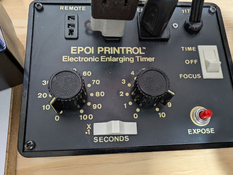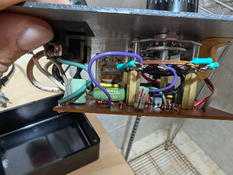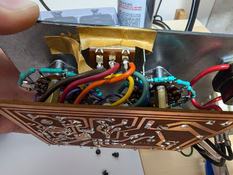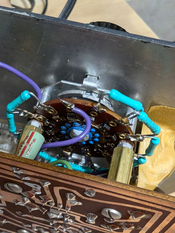Dan Rainer
Member
Hi all,
I recently decided to try f-stop printing and I'm trying to figure out if my EPOI enlarger timer would work well with that workflow. The switch on the bottom says "SECONDS" and toggles between "X1" and "X-1". I'm assuming that this refers to seconds and tenths of seconds. Based on that assumption, the knob on the right does seem to do tenths of a second when in "X-1" mode. However, the left knob gives very inconsistent results.
In X-1 mode, 10 on the left knob gives about 1 second. 10 = 10/10 = 1, seems simple. However at longer times, this breaks down. Set to 90, I got over 2 minutes of light. Does anyone have any insight into how this timer works? Bonus points if you have any info on EPOI, I can't find anything about the company online.
I recently decided to try f-stop printing and I'm trying to figure out if my EPOI enlarger timer would work well with that workflow. The switch on the bottom says "SECONDS" and toggles between "X1" and "X-1". I'm assuming that this refers to seconds and tenths of seconds. Based on that assumption, the knob on the right does seem to do tenths of a second when in "X-1" mode. However, the left knob gives very inconsistent results.
In X-1 mode, 10 on the left knob gives about 1 second. 10 = 10/10 = 1, seems simple. However at longer times, this breaks down. Set to 90, I got over 2 minutes of light. Does anyone have any insight into how this timer works? Bonus points if you have any info on EPOI, I can't find anything about the company online.
















